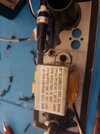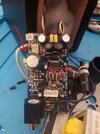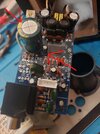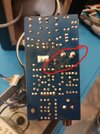Howdy!
I just joined, and I'm glad to be a part of an electronics repair for like this one.
I'm merely a student just getting started; so the ideas and questions are rambling in my head.
But for now; I'll stick to my issue at hand...
I have a Studio Monitor (M-Audio Audiophile AV 20) that I'm troubleshooting... I've already replaced 2 bloated and leaking bad CAPs in it.
The front light turns on, but I don't get any audio out of it. So, I wonder if there is something wrong with the transformer. (these monitors have no physical damage to them.)
I humbly ask for help in this troubleshooting journey... as I am just a student; and if I'm missing pertinent info here; or I'm not asking the right questions…

Many thanks in advance.
Regards~
I just joined, and I'm glad to be a part of an electronics repair for like this one.
I'm merely a student just getting started; so the ideas and questions are rambling in my head.
But for now; I'll stick to my issue at hand...
I have a Studio Monitor (M-Audio Audiophile AV 20) that I'm troubleshooting... I've already replaced 2 bloated and leaking bad CAPs in it.
The front light turns on, but I don't get any audio out of it. So, I wonder if there is something wrong with the transformer. (these monitors have no physical damage to them.)
I humbly ask for help in this troubleshooting journey... as I am just a student; and if I'm missing pertinent info here; or I'm not asking the right questions…

Many thanks in advance.
Regards~




